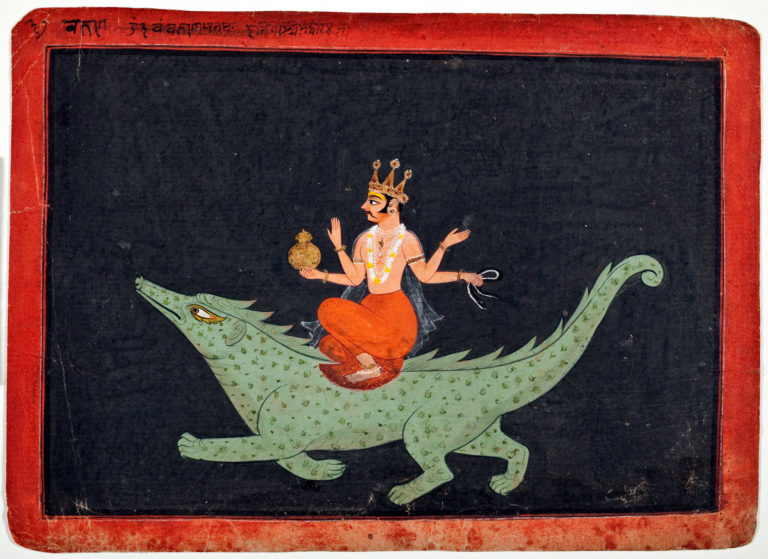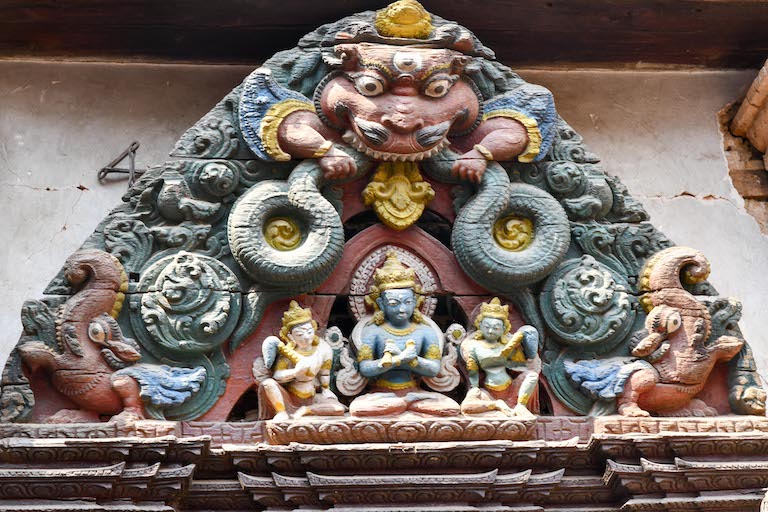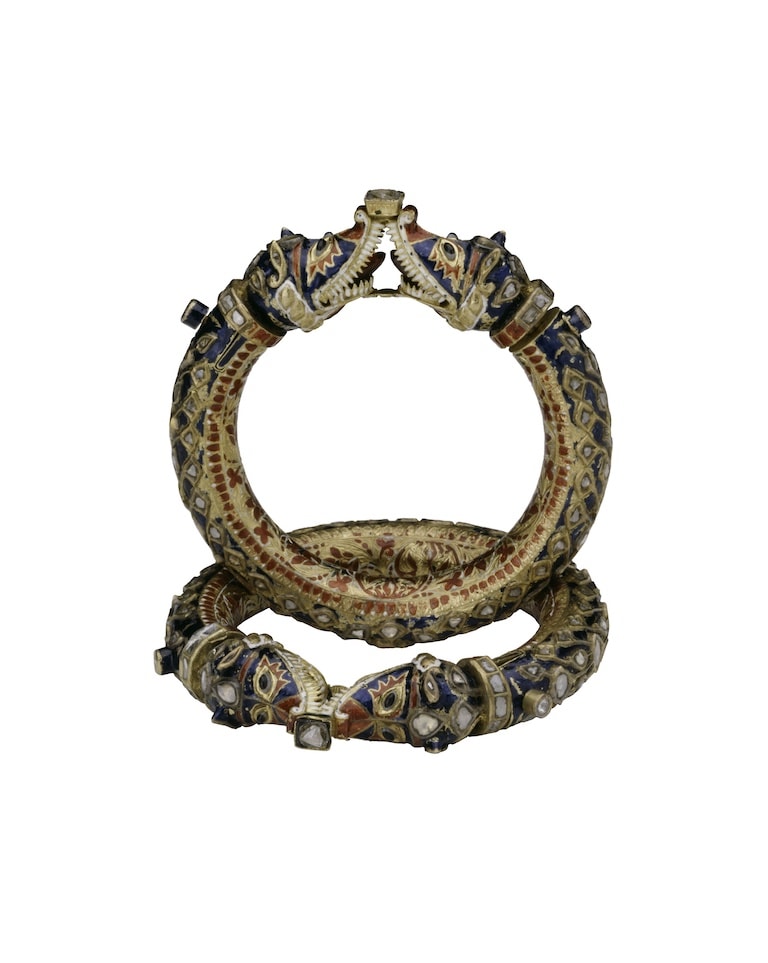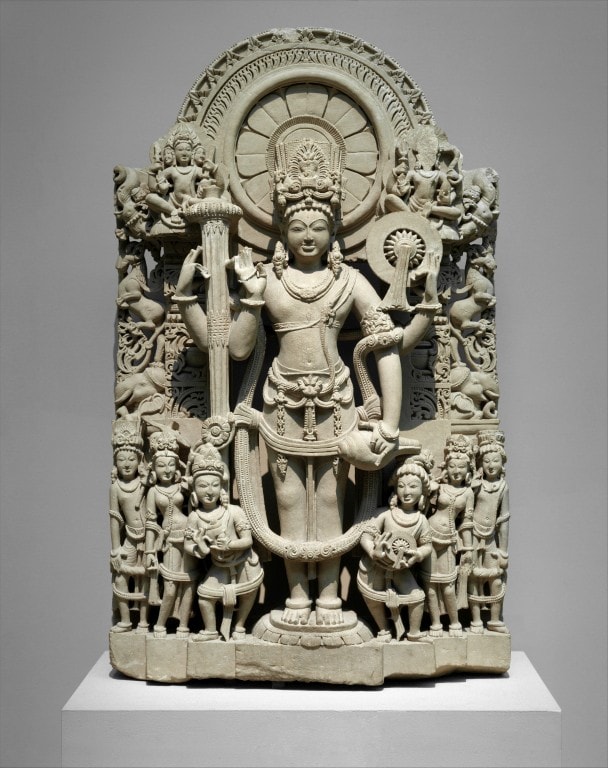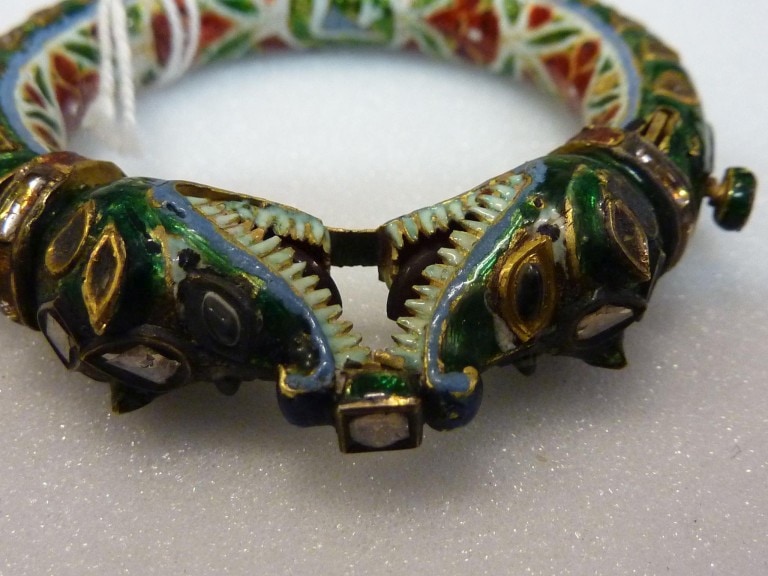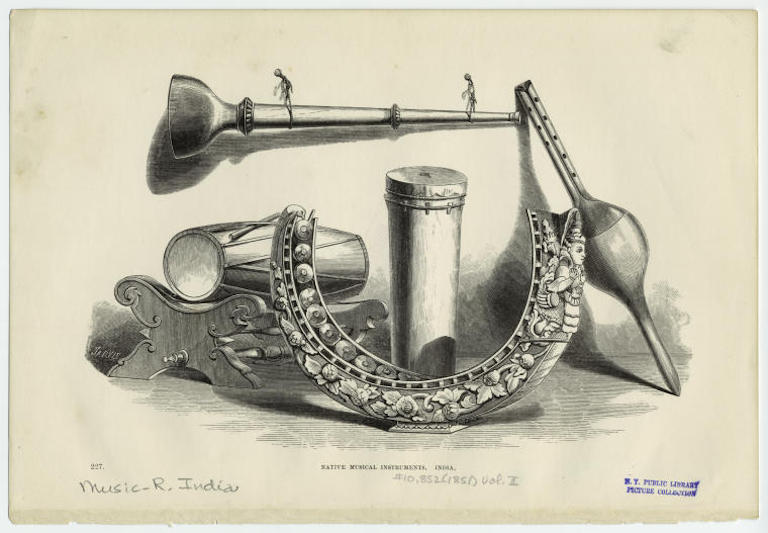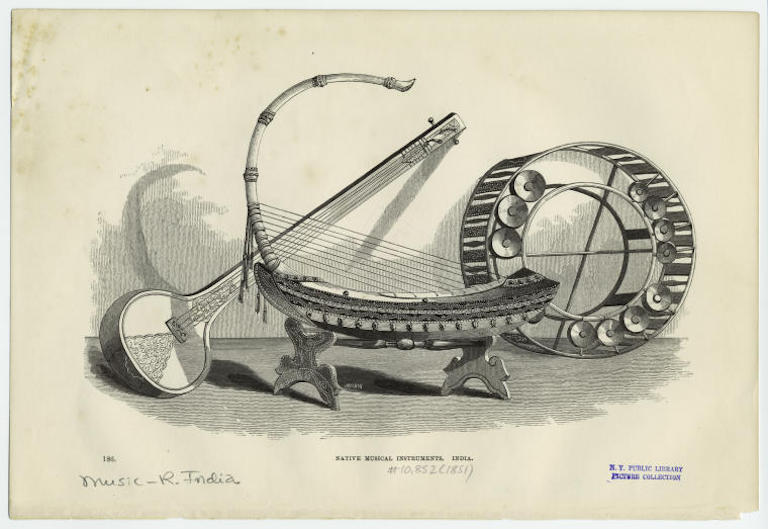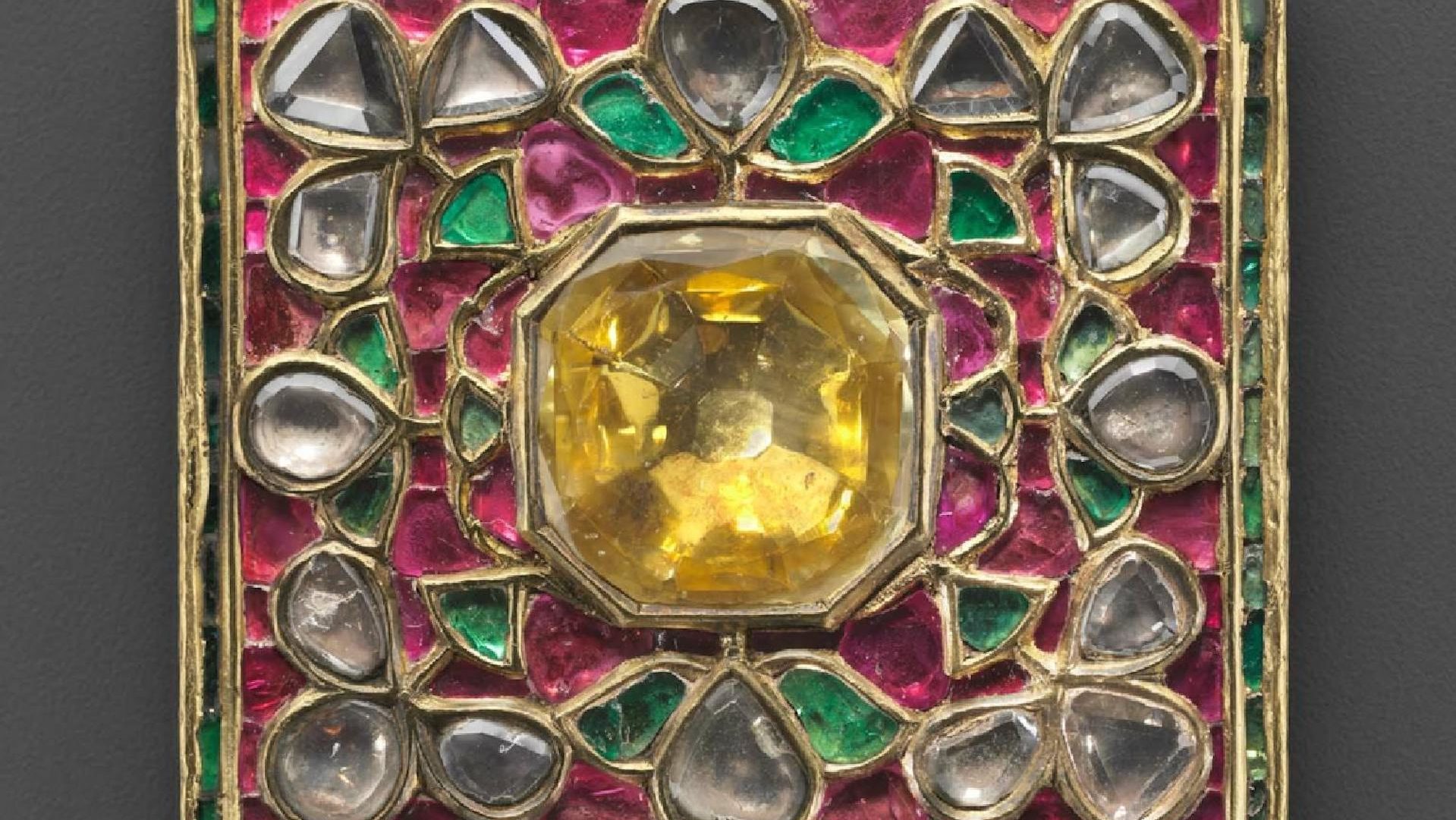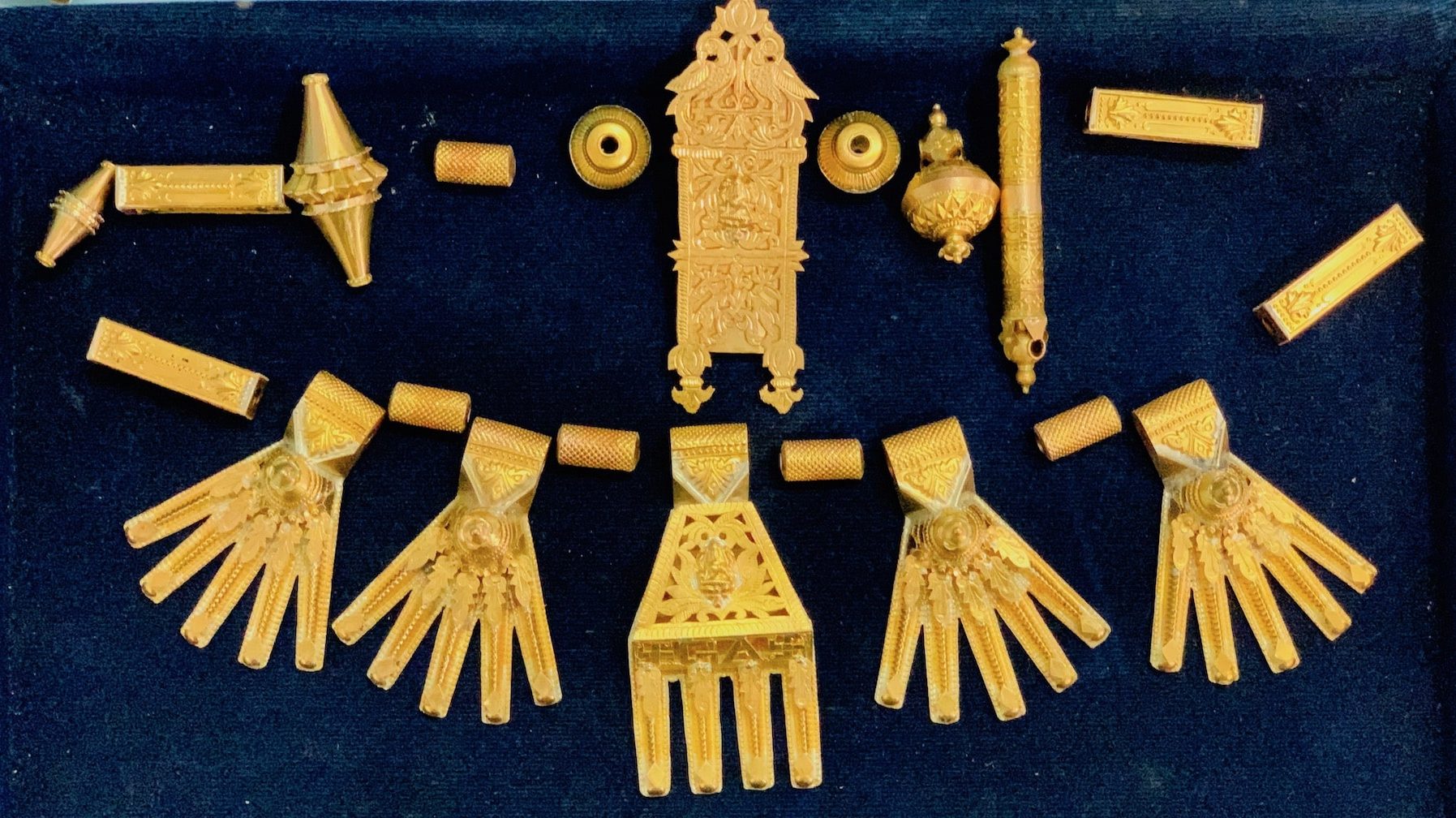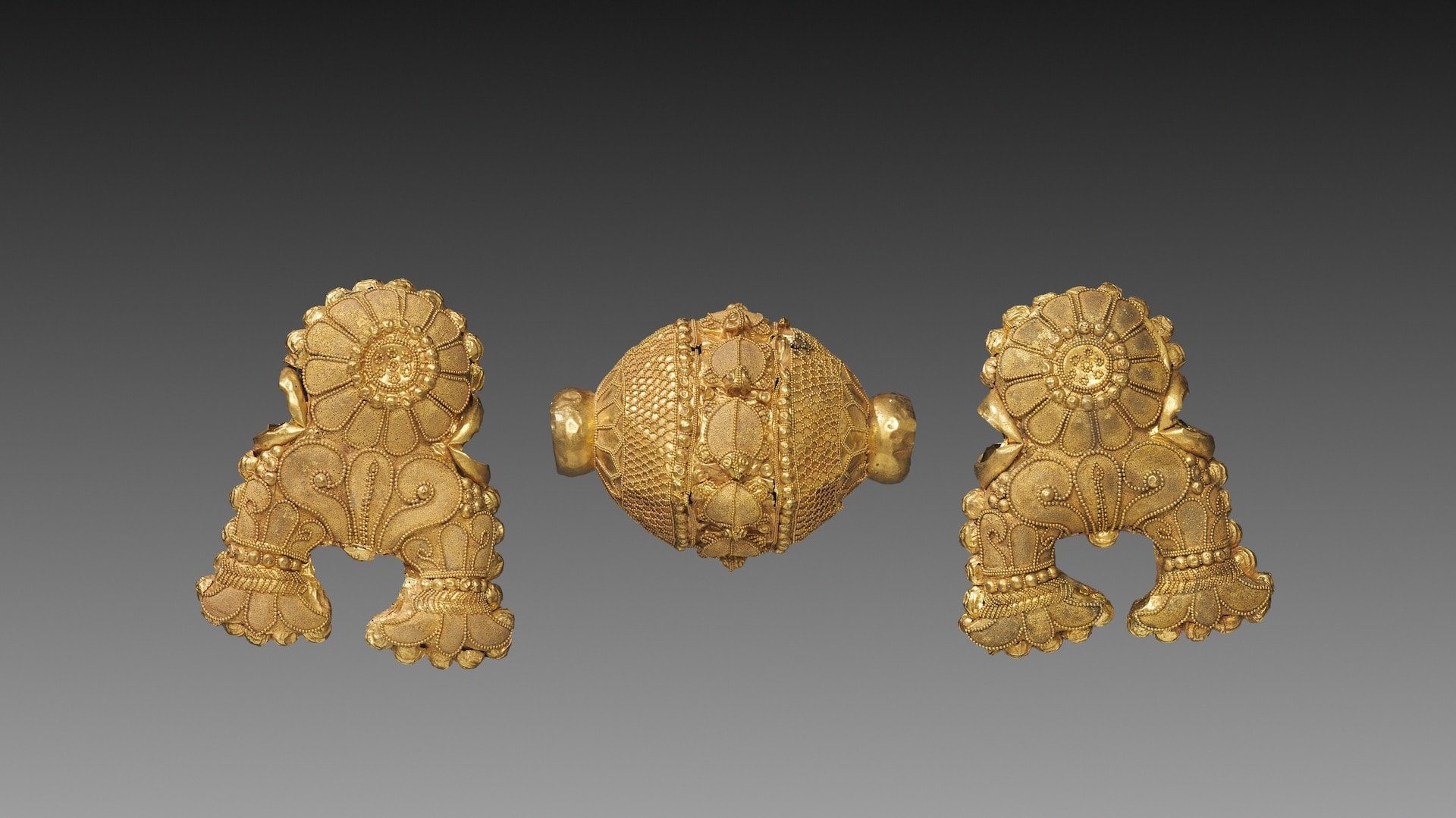The image on top is a vajra flaying knife from 15th century Tibet.
The vajra comes out of the mouth of a makara. An object of beauty for that darkest of purposes: to kill
Behold this stunning 17th century gold pendant.
The cap of the pendant takes the form of a makara, with two turquoise eyes and a red stone in the center of its head.
Traces of a red residue suggest that the pendant may have been filled with an aromatic substance– what a wonderful way to carry your perfume on your body.
Are makaras crocodiles?
Makaras are often referred to as crocodiles but they are more than that. They are found in temples, sculptures, functional objects, and of course, jewellery.
An early association links makara with Varuna, the god of water, who rides on this beast. Like many things that spring from water– the lotus, for instance– early Indians associated the makara with strength, fertility, virility and fierceness.
But they also link the makara with gruesome death, fear and darkness. More on that here.
Who rides the makara?
Ganga (गङ्गा), the river goddess is called makara-vahana (मकरवाहना) and the gangetic dolphin is her vahana. Yamuna, her sister, rides on a tortoise, but that vahana was given to Yamuna later.
Makara is also linked to Kama, the god of love, whose flagpole is called “makara-dhvaja.” Hence makara’s association with virility.
Makara as a motif
There are at least three ancient types of jewellery that have this name.
One is the makara kanti (necklace) and the other, the makara kundala (or makara earrings), worn by Lord Shiva and Vishnu, and their forms or avatars.
Several gods wear the makara keyura (the arm band), or the arm bracelet
The dancing earrings
Makara kundala earrings make their appearance in numerous contexts. For example, a famous Tamil song on Lord Krishna talks about how the makara kundala dances and its flashing brilliance was reflected in the gems of his crown. You can listen to Sudha Raghunathan sing this song here. Go to 3:45 for the exact passage. Or you can watch it in the dance to the right. Go to 3:08
Makara in iconography
One of the 12 names of Lord Vishnu is Narayana.
Several texts including the Sesha Samhita describe Lord Narayana in this way: he should be seated upon a white lotus; and bedecked with armlets, crocodile-shaped earrings (makara–kundala) , a rich crown , the kaustubha gem and Srivatsa on the chest; and decorated with flowing garlands (vanamala).
Yellow or red garments, conch, and discus complete the picture.
The image here has not just the makaras surrounding Vishnu but also elephants and lions.
As above so below
One Bangalore-based Sanskrit scholar, H.S. Sudarshan suggests that the dolphin that the Ganga rides on could have been the mirror of the dolphin or Draco constellation (शिशुमारः or शिंशुमारः near the northern sky close to the akaasha ganga). Such assumptions of similarities between earth and sky is all across the Vedic and Puranic themes.




